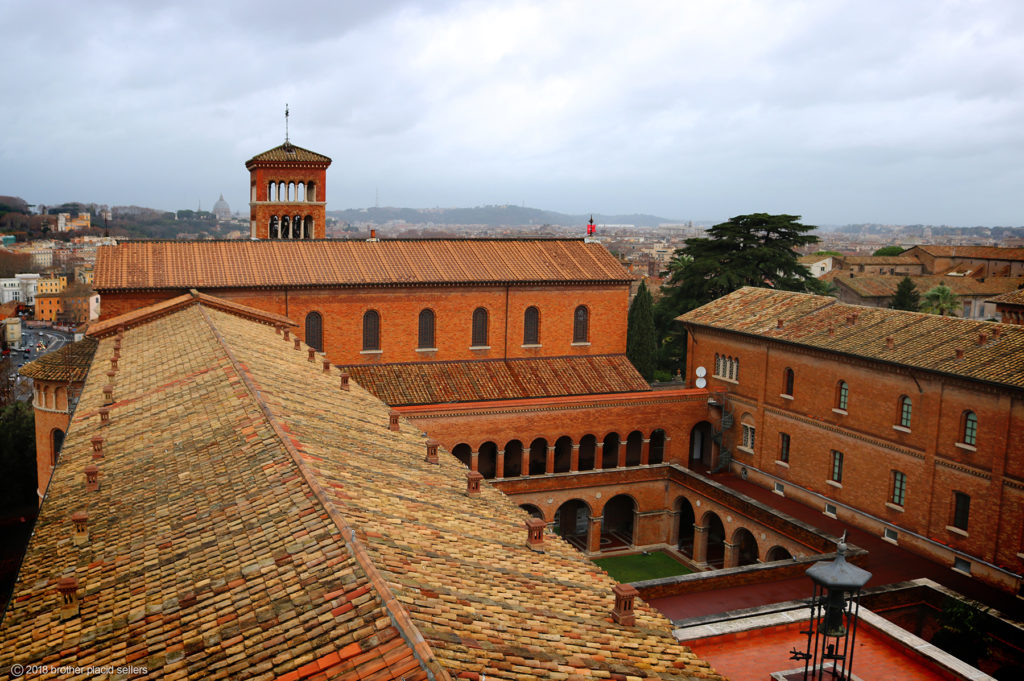From the thirteenth century onwards most Benedictine monasteries were grouped into congregations. Pope Innocent XI instituted the first College of Saint Anselm (or Sant’ Anselmo) for the Cassinese (Italian) Benedictine Congregation in 1687. Originally located at Saint Paul Outside the Walls, during the Napoleonic era this school was suppressed and in 1887 Pope Leo XIII founded the international Benedictine College of Sant’ Anselmo. This re-foundation was intended to offer a solid academic formation for young monks from the worldwide Benedictine Confederation, which the Pope created at almost the same time, grouping together the various Benedictine congregations. The Pope also hoped that the monks educated at Sant’ Anselmo would help to form a bridge with the Eastern Churches, which also had a long monastic tradition.
Over the years Sant’ Anselmo grew from being a general house of studies for Benedictines to include other religious communities as well as diocesan students. Eventually, Sant’ Anselmo was put on a par with the other pontifical Roman colleges. In 1914, Pope Pius X confirmed the right of the college to confer degrees doctorate included in philosophy, theology and canon law.
Pope Leo’s choice of a patron saint for this new international college was itself symbolic of the whole educational adventure. Saint Anselm of Canterbury (1033-1109) was a Benedictine monk and a Doctor of the Church. Saint Anselm unites both the monastic tradition and a zeal for learning at the heart of the Church. He wrote, credo ut intelligam, “I believe so that I may understand.” Such an inspiration can also unfold into: “I seek to understand so that I may ever more deeply believe.”
Under the influence of master teachers over the decades, Sant’ Anselmo developed a reputation for a style of theology in which love of learning and desire for God grow together. Monastic culture with its celebration of the Liturgy and its practice of lectio divina sets the tone for both teaching and studying. This, then, becomes a monastic gift, not only for monks and nuns, but to the wider theological dialogue. It becomes a gift hidden in the heart of the Church of Rome.

